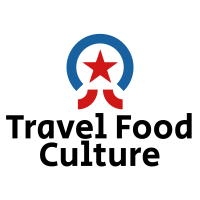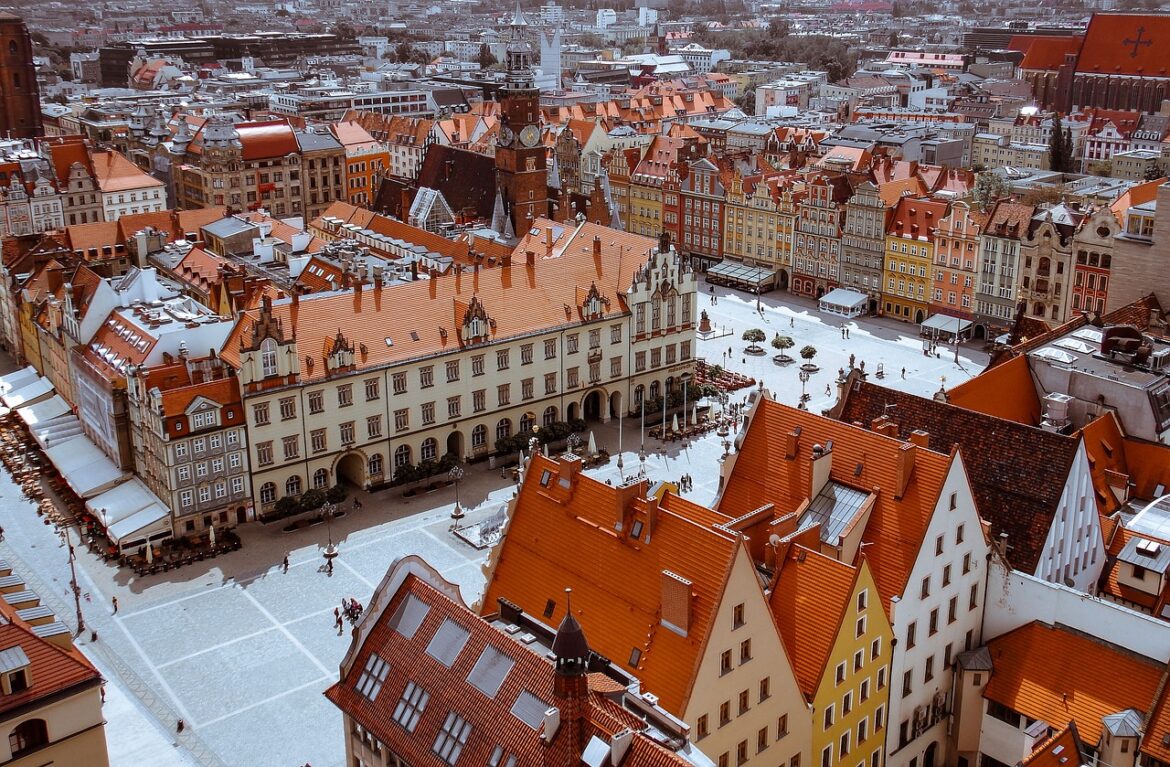Introduction
Wrocław, situated in western Poland, stands as a testament to the nation’s multifaceted allure. As one of Poland’s premier travel destinations, the city draws visitors from around the globe with its enchanting blend of historical significance, vibrant culture, and architectural splendor. Nestled along the Odra River, Wrocław’s picturesque setting provides a scenic backdrop to its narrative, inviting travelers to delve into a captivating exploration of its past and present. The city’s charm lies not only in its physical landmarks but also in the palpable energy that resonates through its streets, making every visit a dynamic and immersive experience.
Wrocław’s rich history unfolds as a captivating story of resilience and adaptation. From its medieval roots as a bustling trade hub to enduring periods of war and reconstruction, the city’s architecture bears witness to the ebb and flow of time. The fusion of Polish, German, and Czech influences has shaped Wrocław into a cultural mosaic, where each stone in its historic edifices narrates a chapter of the city’s complex and fascinating history.
The vibrant culture of Wrocław permeates every facet of the city, from its lively street performances to its thriving arts scene. Museums, galleries, and theaters abound, offering a diverse range of cultural experiences. Whether wandering through the Market Square, adorned with street musicians and artists, or attending one of the city’s many festivals, visitors are immersed in an atmosphere that celebrates creativity and expression.
Architectural beauty is not just a visual feast in Wrocław; it is a journey through the ages. The Market Square, with its pastel-hued buildings, stands as a testament to Gothic, Renaissance, and Baroque influences. Ostrów Tumski’s ancient charm and the modernist marvel of Centennial Hall showcase the city’s architectural diversity. Each corner turned in Wrocław reveals a new perspective, making it a destination where every step is a discovery.
Beyond its aesthetic appeal, Wrocław’s lively atmosphere creates a magnetic pull for those seeking a dynamic urban experience. The city’s streets buzz with a fusion of history and modernity, as cafes spill onto cobblestone sidewalks, and cultural events unfold in the shadow of ancient landmarks. Wrocław is not just a destination; it’s an immersive journey through time and culture, leaving an indelible mark on those fortunate enough to explore its wonders.
Historical Significance
Wrocław’s historical significance is deeply rooted in its over a millennium-long history. The city has witnessed the rise and fall of empires, changing hands between Polish, German, and Czech rule. This diverse historical background is palpable as you stroll through the Old Town, where medieval and Renaissance architecture stand side by side. The city’s resilience and ability to preserve its heritage despite tumultuous times contribute to a palpable sense of history that permeates the cobblestone streets and historic landmarks.
Architectural Marvels
The architectural splendors of Wrocław are showcased in its Old Town, particularly the expansive Market Square. The vibrant array of colors and intricate details on the facades of buildings create a visual feast for visitors. Notable landmarks such as the Wrocław Cathedral and the Old Town Hall exhibit stunning Gothic architecture. The juxtaposition of styles reflects the city’s diverse cultural influences over the centuries, making it a captivating destination for architecture enthusiasts and history lovers alike.
Ostrów Tumski
Ostrów Tumski, or Cathedral Island, offers a serene escape into Wrocław’s past. As the oldest part of the city, its narrow cobblestone streets and historic buildings create an intimate and tranquil atmosphere. The Wrocław Cathedral, dominating the skyline, adds to the area’s spiritual ambiance. Exploring Ostrów Tumski allows visitors to step back in time and appreciate the city’s medieval roots, making it a must-visit for those seeking a more contemplative experience.
It is a historical and spiritual enclave that invites visitors to step back in time. Connected to the rest of Wrocław by picturesque bridges, this island exudes a peaceful ambiance with its narrow cobblestone streets and ancient buildings. The Wrocław Cathedral, a stunning Gothic masterpiece, anchors Ostrów Tumski and serves as a focal point for spiritual contemplation. As the birthplace of the city, this island preserves the essence of Wrocław’s medieval origins, making it a destination for those seeking a tranquil escape and a deeper connection to the city’s historical roots.
Wrocław Gnomes (Krasnale)
Wrocław’s Gnomes, locally known as “Krasnale,” have become an iconic and whimsical feature of the city. These small bronze statues, scattered throughout the urban landscape, have transcended mere decoration to become a symbol of protest during the communist era. Originally installed in the 1980s as a lighthearted form of resistance, the gnomes have since multiplied, numbering over 600, each with its own unique personality and story. From the academic gnome with glasses reading a book to the firefighter gnome wielding a hose, each figure contributes to a delightful scavenger hunt for locals and tourists alike. Beyond their playful charm, the gnomes serve as a testament to Wrocław’s resilience and creativity, transforming adversity into a source of cultural pride.
Cultural Events, Festivals & Traditional Food at Wrocławska
Wrocław’s vibrant cultural scene comes to life through a myriad of events and festivals held throughout the year. From music and art festivals to theatrical performances, the city becomes a hub of creativity and expression. Notable events like the Festival of Good Beer and the Wratislavia Cantans International Festival of Music attract locals and tourists alike, fostering a sense of community and celebration of the arts.
Wrocław’s culinary scene is a delightful fusion of traditional Polish flavors and innovative twists. At Wrocławska, a cozy restaurant in the heart of the Old Town, visitors can savor the richness of Polish cuisine in an authentic setting. Pierogi, Poland’s beloved dumplings, take center stage, filled with a variety of savory and sweet fillings. The menu also features hearty dishes such as żurek (sour rye soup) and bigos (hunter’s stew), showcasing the depth of Polish culinary heritage. The warm and inviting atmosphere of Wrocławska provides a perfect backdrop for indulging in a gastronomic journey through the city’s culinary traditions.
Christmas Market, Old To Neon Side Gallery
Wrocław’s Christmas Market is a festive extravaganza that transforms the Old Town into a winter wonderland during the holiday season. The Market Square becomes adorned with twinkling lights, festive decorations, and the scent of mulled wine and traditional Polish treats fills the air. Wooden stalls offer handmade crafts, seasonal decorations, and gifts. The Christmas Market is not just a shopping destination; it’s a cultural celebration with live music, carolers, and a magical atmosphere that captivates visitors of all ages. Meanwhile, the Neon Side Gallery, a unique outdoor exhibition, juxtaposes the festive spirit with a contemporary art experience. The gallery showcases neon signs from the city’s past, creating a dynamic interplay between tradition and modernity, making the Christmas Market a must-visit for those seeking a magical holiday experience in Wrocław.
Parks and Green Spaces
Wrocław’s commitment to greenery is evident in its numerous parks and open spaces. Szczytnicki Park, with its Japanese Garden and Centennial Hall, provides a picturesque escape. The Odra River embankments offer scenic views and pleasant walking paths. These green spaces not only contribute to the city’s aesthetic appeal but also provide locals and visitors alike with peaceful retreats in the heart of the urban landscape.
University Town Vibe
The presence of Wrocław University infuses the city with a dynamic and youthful energy, creating a lively and welcoming atmosphere. The streets are dotted with cafes, bookshops, and cultural spaces where students and intellectuals gather. The blend of academic pursuits, creative endeavors, and social interactions gives Wrocław a distinct university town vibe, making it a destination where tradition and modernity seamlessly coexist.
Gastronomy & Traditional Food at Wrocławska
Wrocław’s gastronomic scene reflects the city’s cultural diversity, offering a culinary journey that satisfies diverse palates. From traditional Polish dishes served in charming Old Town restaurants to international cuisine in trendy neighborhoods, the city caters to a wide range of tastes. The Market Square stands out as a gastronomic hub, where visitors can indulge in local delicacies while surrounded by the architectural splendors of Wrocław.
Wrocław’s culinary scene is a delightful fusion of traditional Polish flavors and innovative twists. At Wrocławska, a cozy restaurant in the heart of the Old Town, visitors can savor the richness of Polish cuisine in an authentic setting. Pierogi, Poland’s beloved dumplings, take center stage, filled with a variety of savory and sweet fillings. The menu also features hearty dishes such as żurek (sour rye soup) and bigos (hunter’s stew), showcasing the depth of Polish culinary heritage. The warm and inviting atmosphere of Wrocławska provides a perfect backdrop for indulging in a gastronomic journey through the city’s culinary traditions.
Mary Magdalene Church
The Mary Magdalene Church, a Gothic masterpiece dating back to the 13th century, stands as a captivating symbol of Wrocław’s architectural heritage. Located on Ostrów Tumski, the church’s soaring spires and intricate detailing showcase the craftsmanship of the medieval builders. The interior is equally impressive, adorned with stunning stained glass windows and ornate altars. Mary Magdalene Church serves not only as a place of worship but also as a living museum of Wrocław’s religious history. Climbing the church towers offers panoramic views of the city, providing a unique perspective on Wrocław’s evolving skyline.
Hala Targowa
Hala Targowa, the bustling market hall, is a sensory delight for those exploring Wrocław’s culinary scene. Dating back to the early 20th century, the hall is a treasure trove of fresh produce, artisanal goods, and local delicacies. Strolling through its vibrant aisles, visitors encounter an array of flavors, from aromatic spices to freshly baked bread and regional cheeses. The market is not just a place to shop; it’s an immersive experience where the vibrant colors and diverse scents evoke the essence of Wrocław’s gastronomic culture. Hala Targowa stands as a testament to the city’s commitment to preserving its culinary traditions while embracing modern tastes.
Accessibility:
Wrocław’s accessibility enhances its appeal as a travel destination. The Copernicus Airport Wrocław provides convenient connections for both domestic and international travelers. The city’s strategic location in western Poland makes it a gateway to exploring other parts of the country. Whether arriving by air, train, or road, Wrocław’s accessibility ensures that visitors can easily embark on a journey to discover the city’s many charms.
Learn More
- Greek Islands
- Italian Islands
- Global Food Videos
- Fire Your Boss
- Job Liberation
- Retire Early
- Do What You Love Stories


